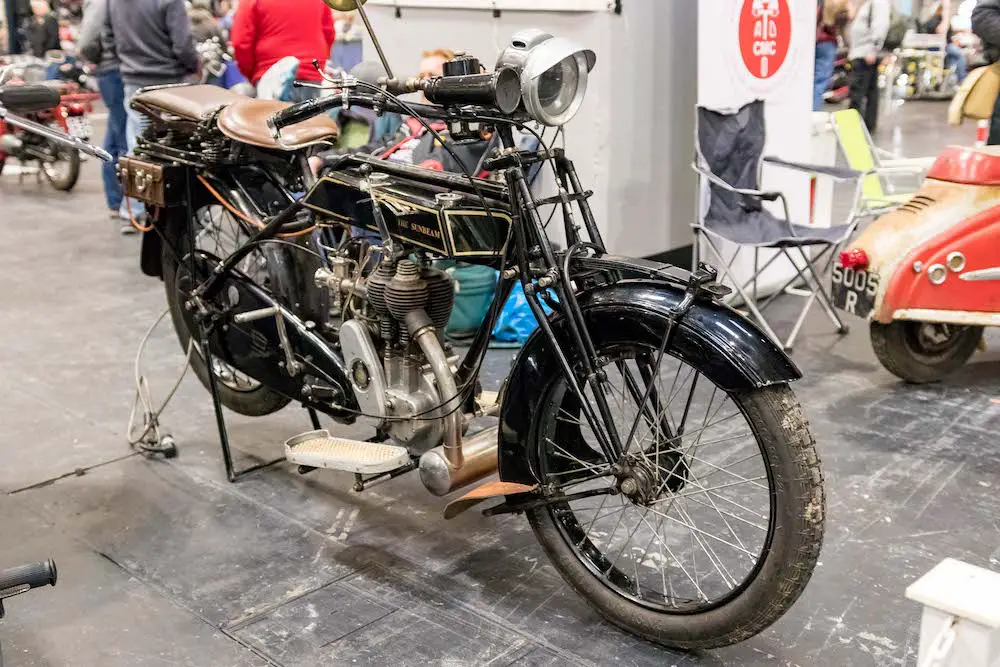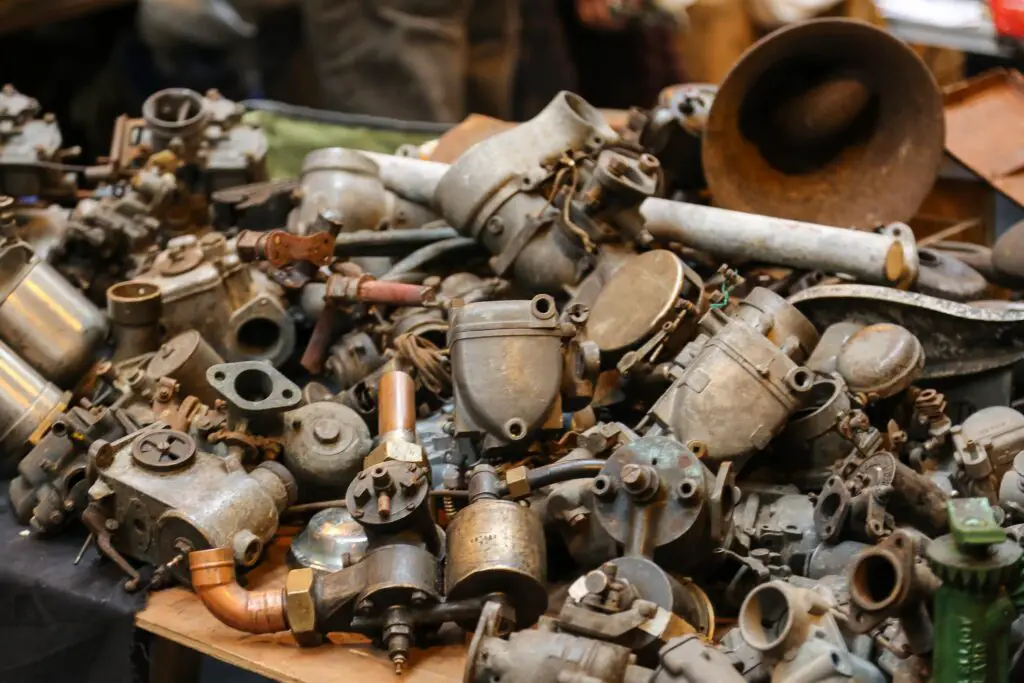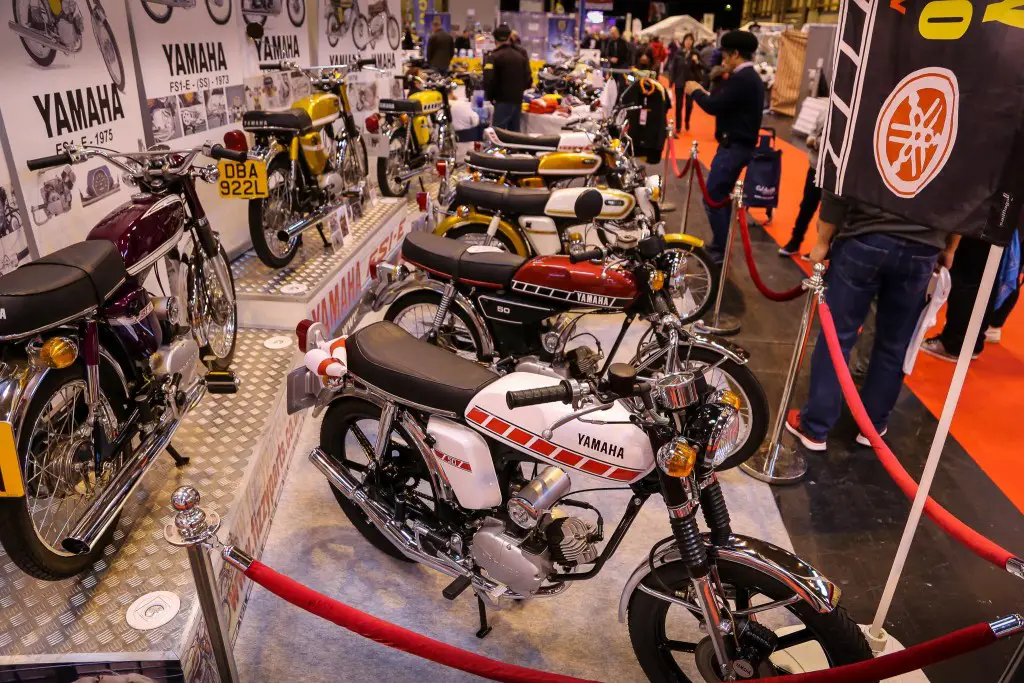If you enjoy riding motorcycles, you probably already know that Mikuni carburetor models are among the best available. These high-end motorcycles often use these carburetors because of their reputation for quality and performance.
Mikuni carburetor models are simple to recognize thanks to their characteristic chamber and jet placement. The jets are typically positioned in the center of the carburetor body, although Mikuni carburetors have their jets closer to the bottom.
We will go over how to recognize a Mikuni carburetor model on your bike, what makes them unique, and how to properly maintain them in this article.
We’ll also examine their operation and discuss why motorcycle enthusiasts love them so much!
- Mikuni Carburetor
- Motorcycle Carburetor
- Carburetor Parts
- Replacement Carburetor
- Frequently Asked Questions
Mikuni Carburetor
Mikuni carburetor models are renowned for their excellence and effectiveness. These carburetors, which frequently appear on expensive motorcycles, have several advantages over other kinds of carburetors.
The airflow is among the most crucial factors to take into account when selecting a carburetor.
Mikuni carburetors enable more air to pass through them than the majority of other types of carburetors because of their greater diameter.
More power and overall greater performance are the results of the enhanced airflow. Mikuni carburetors also have the benefit of being relatively simple to tune. They are quickly becoming a millennial necessity.
You’ll be relieved to learn that Mikuni carbs are fairly forgiving if you have little experience tuning motorbike engines.
This implies that you can make minor carburetor modifications without worrying about damaging the engine.
Last but not least, Mikuni carburetor models are made to last for a long time. These carbs are comprised of high-quality components and are built to last for many years. As a result, your Mikuni carburetor won’t need to be replaced anytime soon.
Motorcycle Carburetor
Let’s talk about what a motorcycle carburetor is specifically to get a better idea. To put it simply, the job of a motorcycle’s “carb,” or set of numerous carburetors, is to produce a combustible mixture of gasoline and air that will power the engine and provide the energy to move the vehicle forward.
Over time, carburetors have been updated, modernized, and enhanced, but the fundamental idea of combining fuel and air has remained the same.
Mikuni Carburetor Models #1 – How Do Carburetors Work
What does a carburetor do? How does a carburetor on a motorcycle operate? We should start with the fundamentals:
The function of a carburetor is to provide an internal combustion engine with a fuel/air mixture.
Carburetors control the airflow through their main bore (Venturi), which also serves as a fuel intake. The resulting mixture enters the engine through the intake valve.
Operation requires the Venturi Principle/Effect, which is detailed below.
Carburetors have a bowl, a central bore, passages, jets, vents, a slide, an enrichener (also known as a choke), an adjustment for the idle speed, an adjustment for the air/fuel ratio, and frequently an accelerator pump.
Mikuni Carburator Models #2 – Benefits Of Motorcycle Carburetors
Simple and convenient DIY fixes generally do not need a computer or software for adjustment, making them useful in racing applications.
They require no pressurized gasoline lines to function.
Mikuni Carburetor Models #3 – Motorcycle Carburetors Challenges
Notably less effective than fuel injection when the engine is cold or while accelerating can be picky after a long lack of use.
For multiple carburetor configurations on vehicles with multiple cylinders to function successfully, they must be in sync with one another.
After going over the fundamentals, let’s delve a little bit more into the operation of a motorcycle carburetor.
Unexpectedly, the amount of fuel that enters the engine is not immediately regulated by turning the throttle on a motorcycle handlebar.
The throttle will control the amount of air passing through the carburetor, and the flow of air will also control the amount of gasoline that goes into the engine.
As per the Venturi Principle/Effect, air pressure lowers, and airspeed increases when it passes through a tube restriction (narrowing).
A system of carefully machined passageways and jets transport the gasoline from the carburetor bowl up and out into the cylinder head as a result of the drop in air pressure.
Carburetor Parts
There are multiple carburetor parts which can come across as a bit confusing.
1. Inlet Hose
Gasoline from the fuel lines will flow through this hose and into the float chamber. The fuel from the tank enters the carburetor area through this conduit.
2. Needle Valve
Since it opens and closes the inlet hose, the needle valve, which is situated within the float chamber, is also known as the gas valve.
This needle has a triangle-shaped design, and its tip points into the input hose. Its bottom diameter is greater than its upper diameter, allowing it to close the gas line when it pushes upward.
And as a result, there is no flow of gasoline from the intake. Because the passage is open, whenever the needle drops again, gasoline will start to flow.
3. Buoy
This is a plastic object that will float on water. The buoy helps to regulate the float needle’s location based on the amount of gasoline present inside the float chamber.
The position of buoyancy is going to be higher and will push up the needle when the fuel volume is high. However, the buoy position is going to return to its original position once the fuel volume starts to decline.
4. Float Chamber
Because this is where fuel is held to be piped into, it functions as a transit space. Fuel from the gas line is kept in this reservoir at an equivalent pressure to that of the atmosphere.
5. Air Vent
The goal of this ventilation duct, which connects the float chamber to the exterior, is to maintain a stable internal pressure based on the atmospheric pressure outside.
As a result, the amount of gasoline that exits inside the Venturi is more optimum.
6. Main Jet
You can also call this the main nozzle, which forms the main conduit that will connect the float chamber and Venturi. Gasoline will exit the main nozzle at the right volume through this channel.
To maintain a constant ratio of gasoline to air, you can adjust the main jet’s diameter to match the engine’s capacity.
Fuel does not leak into the Venturi thanks to the main jet’s direct connection to the float space as well as the sloping position.
7. Slow Jet
Another fuel output that connects the intake manifold to the float chamber is the slow jet. But in contrast to the main jet, the idle jet, which is located right next to the throttle valve, will receive fuel from the slow jet. Whenever the engine is running at idle speed, the slow jet function distributes fuel.
8. Economizer Jet
The purpose of the economizer jet is to improve the air-fuel mixture or homogeneity of the fuel. The idle channel center is where the channel is located.
Simply put, the engine’s economizer jet now will operate at idle speed.
9. Idle Jet
The purpose of the idle jet is to move air into the intake manifold from the air filter. Note that the idle jet affects the engine’s idle RPM settings.
10. Throttle Valve
A coin-shaped throttle valve is located on the fixed Venturi carburetor. These spherical valves often seal off air ducts located inside the intake.
The valve position is going to be more inclined when the accelerator is applied, allowing for smoother airflow. From that, it may be inferred that the throttle valve’s job is to control how quickly air enters the engine.
11. Venturi
In the intake channel, a Venturi will be the pocket with a small diameter. The Venturi’s air flow is intended to be accelerated by the design.
The Venturi’s pressure will decrease with quicker airflow, and this pressure differential causes the gasoline to exit through the main jet. Since the Venturi is before the throttle valve, the valve’s opening angle won’t cause the gasoline to be suctioned by the piston.
12. Choke Valve
The shape of the choke valve and the throttle valve is nearly identical. The throttle valve performs the same task of closing the air ducts that will enter the engine.
However, because the choke valve is behind the Venturi, closing it will result in the piston’s suction drawing more gasoline from the float chamber, allowing for a richer AFM (Air Fuel Mixture).
During a cold start, when a lot of gasoline condenses on the intake wall, the engine utilizes this rich mixture.
13. Screw Control
The idle speed air screw and the idle mixture air screw are the two screws that govern the car’s carburetor.
The opening angle of the throttle valve in the pedal release position is adjustable via the idle speed air screw. The throttle valve remains open when this screw is in place, allowing air to pass via this channel even in small amounts.
You can change the idle jet channel’s size by turning the idle mix screw. Does this setting have a richer or leaner setting, which will affect the fuel and air mix levels?
Mikuni Carburetor Identification
By now you are probably wondering how you can tell if a Mikuni carburetor is genuine. Let’s talk about how to recognize Mikuni carburetor models on your motorcycle now that we understand what they are and why they are unique.
How large the float chamber is formed is one of the quickest indicators of the Mikuni carburetor. As we previously discussed, Mikuni carbs have a bigger diameter than the majority of other carburetors.
This implies that also the float chamber is going to be significantly bigger.
The jet placement on the Mikuni carburetor models is also an effective method of identification.
The Mikuni carburetors will have the jets close to the bottom of the body of the carburetor as opposed to the middle like many other carburetor types. More power and greater airflow are consequently possible.
Lastly, the air filter form can identify the Mikuni carburetor. Unlike many other types of carburetors, Mikuni carbs have a spherical air filter.
Following these guidelines will allow you to recognize Mikuni carburetor models on your motorcycle with ease.
Our next inquiry is on the size and code of the Mikuni carburetor.
You must remove your motorcycle’s carburetor and clean and dry it to do this. If you have prior expertise working with carburetors, you can perform this task on your own, or you can ask your mechanic for assistance.
How To Tell The Size Of Mikuni Carburetor Models
A Mikuni carburetor’s code, such as HSR 42 or TM 42, tells you the design of the carburetor while the number 42 tells you the bore (internal diameter) size (in mm) on the engine end of the carburetor (your carburetor has two ends, one of which connects to the engine and the other to the air filter).
If you carefully inspect the engine end of the carburetor, you might discover a stamped marking that identifies the size and style of your carburetor, such as HSR 42 or something like that.
You can identify the size of the carburetor using a Vernier caliper or a good quality steel scale if you cannot locate any markings.
Do Fake Mikuni Carburetor Models Exist
How can you tell if your Mikuni carb is genuine or not?
Mikuni carburetor models that are original or authentic have an aluminum alloy die-cast body, and you can read the markings MIKUNI CORP and MADE IN JAPAN on the body.
If you’ve previously seen and handled a Mikuni carburetor, you’ll be able to tell the difference between the real thing and the imitation just by holding the carburetor in your hand. One obvious sign is that the imitation will be much lighter.
Regrettably, there are imitation Mikuni carburetors available. These counterfeit carburetors don’t operate as well as real Mikuni carburetor models since they comprise subpar materials.
Do your research and buy from a trustworthy provider if you’re considering purchasing a Mikuni carburetor. This will guarantee that you receive a high-quality item that performs admirably.
You might also want to consider upgrading your bike with a private number plate because, why not!
How To Tell Fake Mikuni Carburetor Models
The price is the best indicator of a phony Mikuni carburetor. A Mikuni carburetor for sale at a ridiculously low cost is probably a fake.
The quality of materials is one more indicator of a fake Mikuni carburetor. False Mikuni carbs often will be frequently comprised of subpar materials that fall short of the caliber of real Mikuni carburetor models.
A phony Mikuni will have the word Mikuni inscribed on its top as well as the side. You can also find the Mikuni emblem on genuine Mikuni carburetor models. Additionally, imitation Mikuni carburetors frequently lack the not-for-aircraft stamp.
Do some online research or ask around if you have questions regarding a specific carburetor. You can get a ton of information about various kinds of carburetors on the numerous forums and websites devoted to motorcycle repair.
Replacement Carburetor
Look at it this way. A healthy life depends on having a healthy heart. The same is true of engines, except that a carburetor serves as their heart.
Similar to cholesterol that finds its way inside the heart, the carburetor could malfunction if it is full of debris or greasy gasoline residue.
Through regular cleaning, you can ensure the effective functioning of your motorcycle’s carburetor.
Are you unsure whenever the carburetor needs cleaning? The following four indicators show that the carburetor needs repair.
It just doesn’t turn on. Your engine could have a dirty carburetor in case it turns over or cranks but doesn’t start.
Too much dirt in the carburetor will prevent the right levels of gasoline and air from reaching the engine, resulting in a turnover but no catch or true start.
Running languidly when the ratio of gasoline to air is off, an engine runs lean. The ratio of air to fuel is typically 12:1 or 15:1, and when there is too much air or not enough fuel, the intake makes a popping or sneezing noise. Lack of fuel reaching the carburetor is one of the main causes.
Mikuni Carburetor Models, Issues #1 – Running Rich
It’s operating richly. The opposite of a lean engine is running rich, which means there is too much gasoline and not enough air. Black smoke emerges from the exhaust at this time.
It is submerged. Moreover, the needle valve could be blocked in the bowl and may not close if there is dirt or debris there.
Fuel spills into the carburetor when this occurs. Fuel leaks from the bowl vents as a result, which affects the air-to-fuel ratio and wets the spark plugs.
Although the carburetor is frequently to fault for these issues, it is not always the cause. Avoid getting heart problems because of a dirty carburetor. Recognize the symptoms so you can prevent malfunctions.
The carburetor needs general maintenance to function properly. As gasoline dries out over time, it leaves a sticky buildup in the carburetor. You will not be able to enjoy your ride due to the accumulation that blocks the pilot jet.
Remember to empty the float bowl after each ride, and keep your motorcycle in a secure location with the gasoline petcock closed to prevent this mess.
The fuel will last longer than a month if you do this. You will need to remove the carburetor from the motorcycle.
When you wash your bike, water seeps through the cable and into the hot-start system, causing the carburetor to deteriorate.
To avoid having to buy a new carburetor, make sure that the water does not get inside. Since the carburetor is the heart of the motorcycle, it needs proper care and cleaning.
While you are at it, you may want to get a scratch remover for your bike.
Mikuni Carburetor Models, Issues #2 – Replacing The Carburetor
Before removing the air filter assembly, first, disconnect the negative battery cable.
Mark the removed vacuum lines using masking tape. Remove the carburetor’s choke, throttle, and any other attached parts, too. For ease of reinstallation, be careful to leave a guide mark on the removed components.
Don’t forget to unplug the carburetor’s fuel line, and clean up any fuel spills.
Use a socket or combination wrench to remove the bolts or nuts holding the carburetor in place once you disengage all the linkages.
Because it contains fuel, gently and levelly remove the carburetor from the engine. Detach the old gasket from the intake manifold and pour the petrol into a secure container.
With a hand cloth, rub the outdated gasket. Continue by attaching the new carburetor to the carburetor box along with the gasket. Reinstall the connections that you previously removed, securing them in place with bolts or nuts.
Reattach the fuel line first, then the choke and throttle, and finally the vacuum line. Additionally, swap out the fuel and air filters, and reconnect the negative battery cable. It should be simple to complete as you are only replacing the things you removed.
Mikuni Carburetor Models, Issues #3 – Engine Evaluation
Start the engine, then look for any fuel leaks. Never use gasoline to start the engine by pouring it on the carburetor. Turn the engine on to enable the fuel pump to supply the carburetor with fuel.
Do continuous cranking for 30 to 40 seconds, then wait 3 to 4 minutes for it to cool before trying again.
Frequently Asked Questions
What’s A Carburetor
A carburetor, also known as a carburetor, is a component used in internal combustion engines to combine air and fuel in the proper proportions for combustion.
How Does A Motorcycle Carburetor Work
The purpose of a carburetor is to provide an internal combustion engine with a fuel/air combination. Airflow through a carburetor’s main bore (Venturi), which regulates air flow, sucks in gasoline, and the mixture enters the engine through an intake valve.
What Was The First Harley Davidson Carburetor Made Of
From a tomato can, the first Harley-Davidson carburetor was constructed (maybe). Numerous stories claim that the original Harley-Davidson motorbike featured a single-cylinder engine, a top speed of 25 mph, and a carburetor made out of a tomato can.





